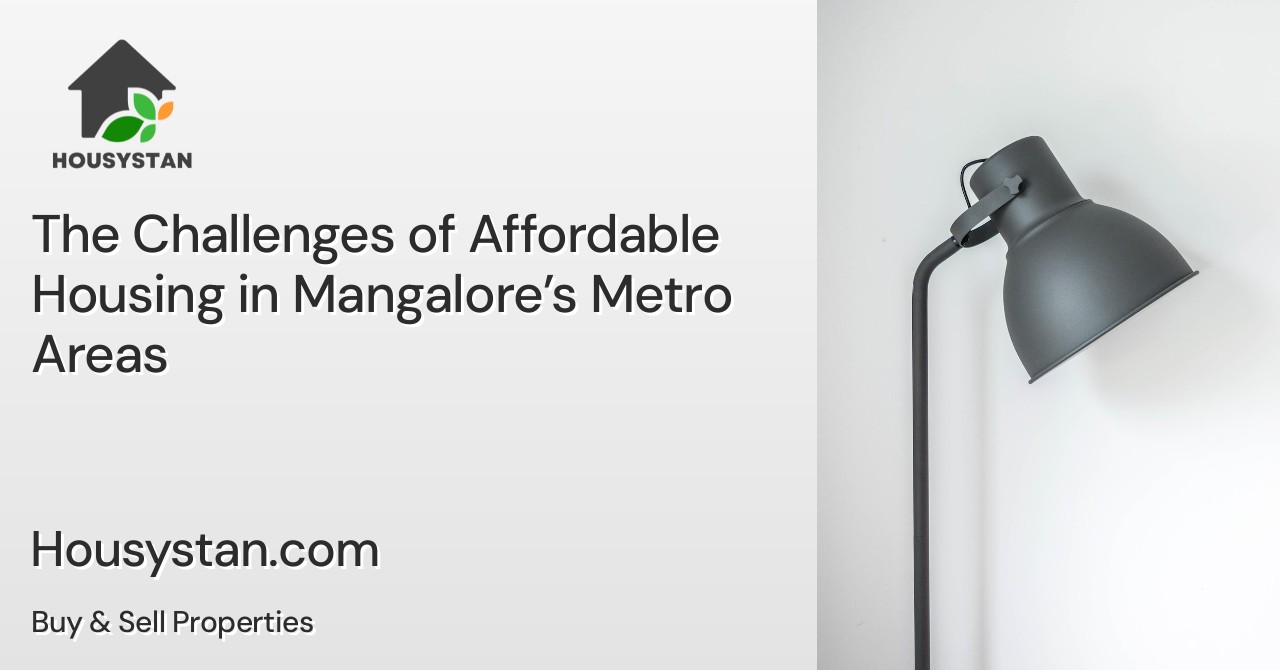The Challenges of Affordable Housing in Mangalore’s Metro Areas
Read latest blogs and articles from Housystan

The Information mentioned here was last updated on:
2/12/2025Mangalore, a thriving coastal city in Karnataka, is witnessing rapid urbanization and expansion, especially within its metro regions. As the city continues to attract professionals, students, and families seeking better opportunities, the demand for affordable housing options in Mangalore’s metropolitan zones has surged. However, this growth brings with it a unique set of challenges that impact both developers and residents aiming to secure reasonably priced homes in prime locations.
One of the foremost challenges facing affordable housing in Mangalore’s metro areas is the escalating cost of land. With limited availability of centrally located plots, prices have soared, making it increasingly difficult for builders to construct budget-friendly apartments or houses without compromising on quality or amenities. This situation often pushes genuine homebuyers toward the outskirts, which might lack essential infrastructure and connectivity to major employment hubs, educational institutions, and healthcare facilities.
Regulatory hurdles also play a significant role in slowing down affordable housing development in Mangalore. Lengthy approval processes, changing zoning laws, and stringent building codes can delay projects, inflate costs, and discourage investment in the affordable segment. These bureaucratic obstacles often prevent timely delivery of housing units, leaving potential residents in limbo and exacerbating the housing shortage within metro limits.
- Verified Tenants/Buyers
- Unlimited Property Listing
- Zero subscription/charges fee
Furthermore, the rising prices of construction materials and labor have added to the financial strain on developers. As the cost of steel, cement, and skilled workers climbs, maintaining affordability becomes a balancing act. Many developers struggle to offer modern amenities and sustainable features without exceeding budget constraints, which directly impacts the overall quality of life for residents in these housing projects.
Another critical challenge is the insufficient availability of government incentives and financial support for affordable housing projects in Mangalore. While certain schemes exist, awareness and accessibility remain limited, hindering widespread adoption. Enhanced collaboration between public authorities and private builders could stimulate affordable housing initiatives and make quality homes accessible to a wider section of Mangalore’s population.
In summary, the journey toward affordable housing in Mangalore’s metro areas is complex, influenced by land scarcity, regulatory constraints, rising construction costs, and limited policy support. Addressing these challenges through holistic urban planning, streamlined approvals, and targeted incentives can pave the way for sustainable growth, ensuring that Mangalore remains an inclusive and vibrant city for every resident seeking a secure home.